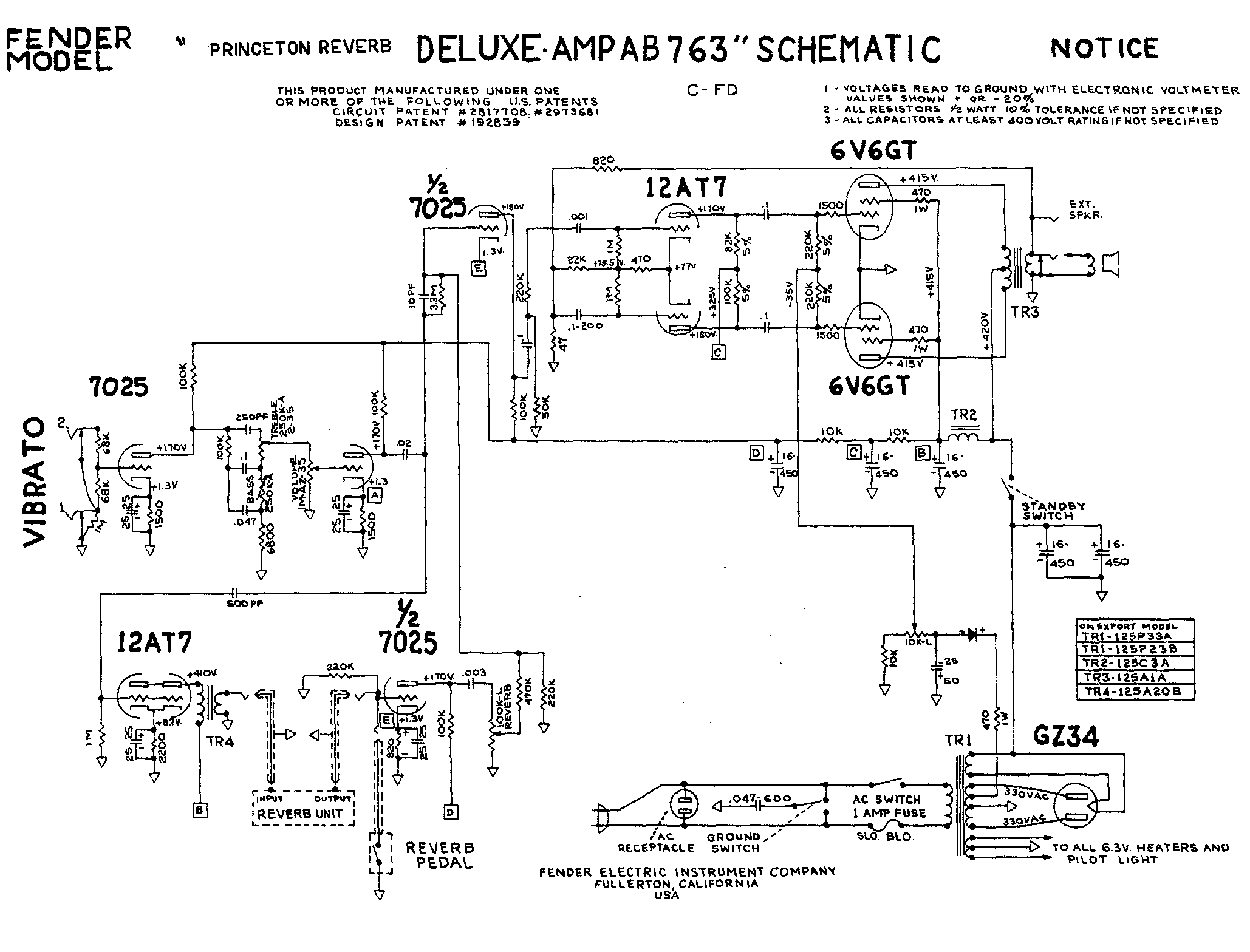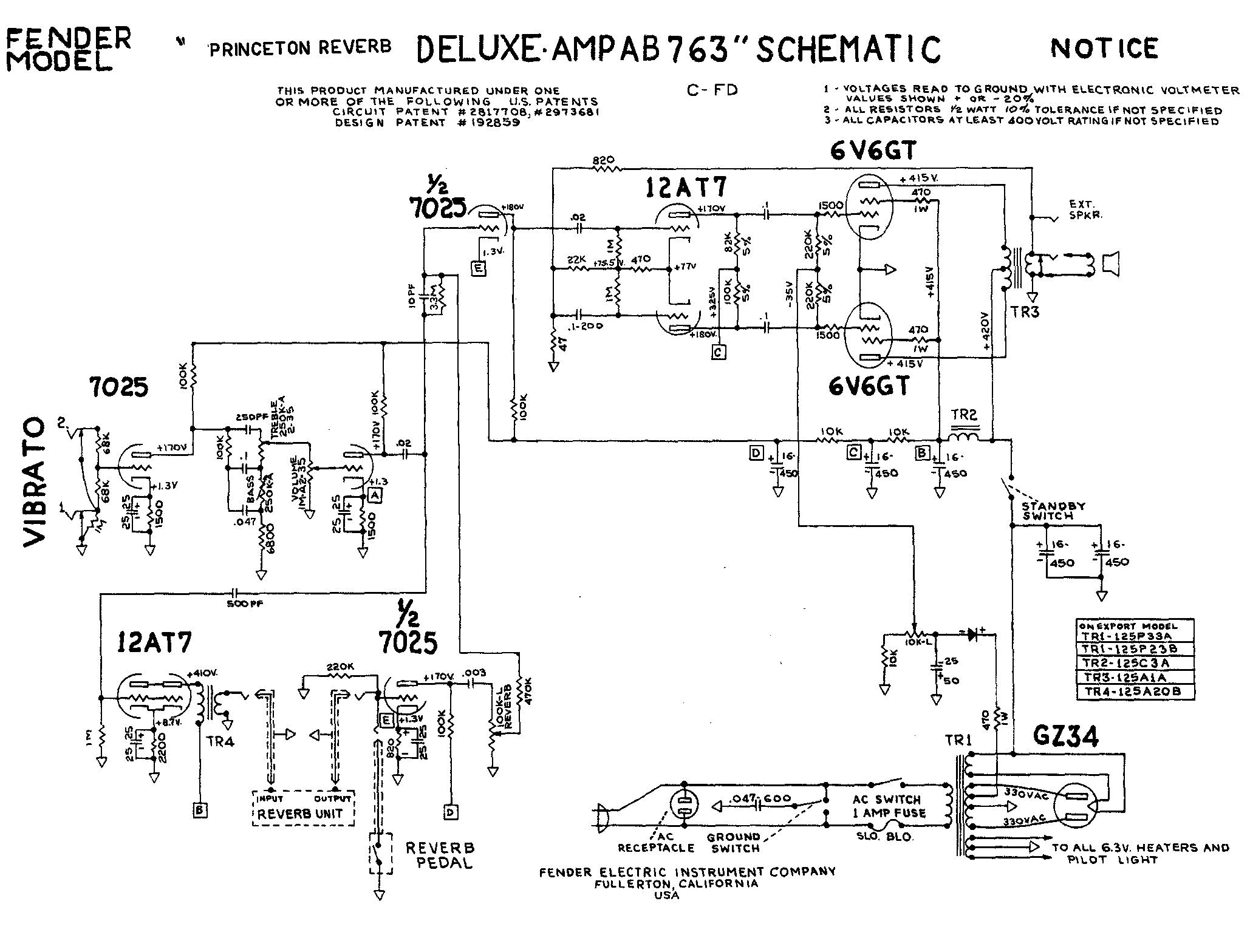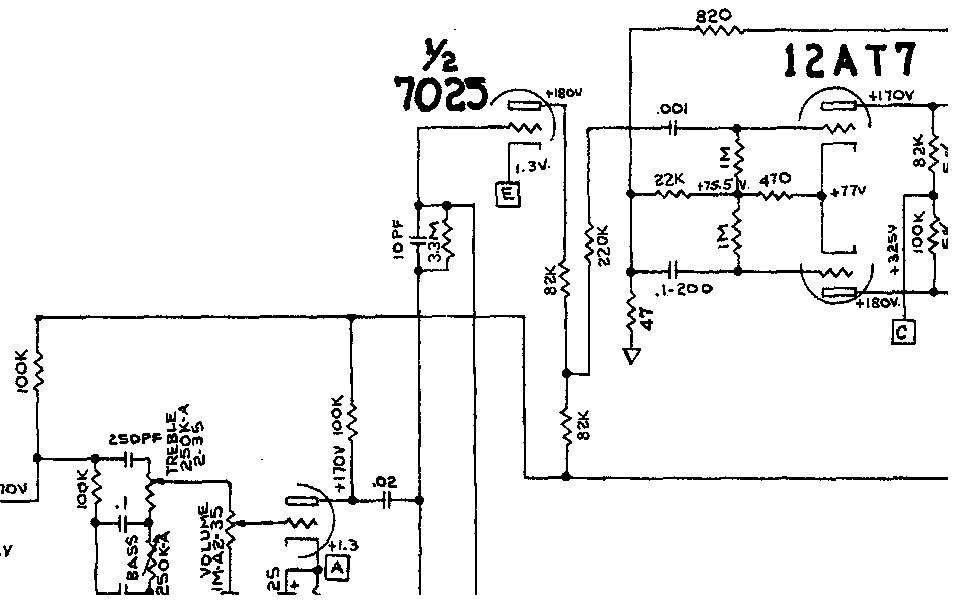hi,
i started my project as a princeton reverb chassis naked, build a exotic wood cab, with 12" weber speaker...
for the electronic part, i decided to go with a deluxe reverb since i prefer the DR PI sound... more efficient to my ears..
i put a DR power tranny, DR output tranny and even found some place for the choke under the chassis... the cap is the cap can with some caps added to reach the filtering power of the dR...
BUT my problem is: the deluxe reverb go with two chanels when the PR chassis has only one channel.. so i tried to wire this first schematic i derived from the DR...

but the sound is not as opened as a classic DR... a little too mufled..
so i tried this second schematic i derived from the PR by just changing the PI...
big buzzz (no ground before the .02 cap??) and way too hot sound, very very loud with volume on 2...

i tried the first schematic with a 100K instead of the 22OK serial resistor... a bit better sounding... but i'm ain't no pro so maybe you can help deciding how to connect the preamp to the PI??
Thanks for help or ideas..
Ben
i started my project as a princeton reverb chassis naked, build a exotic wood cab, with 12" weber speaker...
for the electronic part, i decided to go with a deluxe reverb since i prefer the DR PI sound... more efficient to my ears..
i put a DR power tranny, DR output tranny and even found some place for the choke under the chassis... the cap is the cap can with some caps added to reach the filtering power of the dR...
BUT my problem is: the deluxe reverb go with two chanels when the PR chassis has only one channel.. so i tried to wire this first schematic i derived from the DR...

but the sound is not as opened as a classic DR... a little too mufled..
so i tried this second schematic i derived from the PR by just changing the PI...
big buzzz (no ground before the .02 cap??) and way too hot sound, very very loud with volume on 2...

i tried the first schematic with a 100K instead of the 22OK serial resistor... a bit better sounding... but i'm ain't no pro so maybe you can help deciding how to connect the preamp to the PI??
Thanks for help or ideas..
Ben


Comment